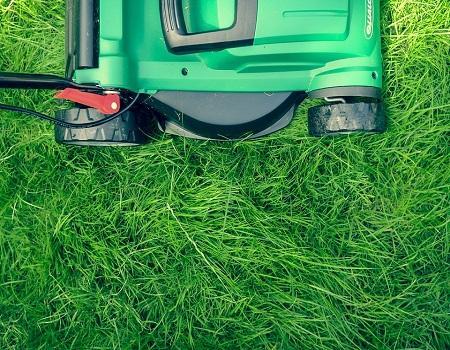Just because your lawn is still a dormant brown or covered in snow, doesn’t mean it’s too early to start thinking about spring lawn preparations. Early planning for spring is especially important if you live in an area that experiences long hot summers, as proper planning is key to maintaining a healthy, luscious lawn through even drought-like conditions.
Mower Blades Length
It can be tempting to set your mower blades to their lowest settings, whether for the cleaner look, or simply to allow more time between mowing. Unfortunately, leaving your blades at their lowest setting robs grass of much needed protection. The higher your grass is allowed to grow, the deeper the roots will reach into the soil. Not only will your roots grow stronger, but each blade increases water reserves during drought conditions. Aim to cut your lawn no shorter than 3 inches.

Fertilizer Routine
While the majority of your fertilizing should be done in the fall when your grass is more focused on growing its root system, properly timing your spring fertilizer application can give our lawn the boost it needs to face hotter weather. Spring fertilizer application can help the lawn grow greener and thicker, but too much fertilizer can actually reduce the strength of its root system. Do not fertilize your grass in the summer, even if it starts to brown from the heat.
Water Less
It seems counter-intuitive to water your grass less in order to better survive the hot summer, but the way you water in the spring helps train your grass for the summer. Your spring watering schedule should involve watering your lawn deeply and infrequently. Changing your schedule in this way will drive water deeper into the soil, encouraging the lawn to send roots deeper to chase where the water goes. Short, frequent watering only saturates to top inch of soil, resulting in shallower root growth.
Importance of Aerating
As your grass grows, it develops a layer between the air and the soil known as thatch. If the thatch is not periodically removed, water can be redirected away from the lawn and stopped from penetrating into the soil. Aerating your lawn helps water reach the soil, and also remedies compacted soil, allowing for deeper root growth.

With a little bit of planning, your lawn will be the envy of your neighborhood even during the hotter summer months. Lawn care can vary slightly based on the type of seed planted and where your lawn is located. Check with your local experts, such as those at places like Central Farm and Garden, for more specific information for your individual landscape. Seeking professional help early on can really help save you a lot of money and get your lawn properly ready for summer.
